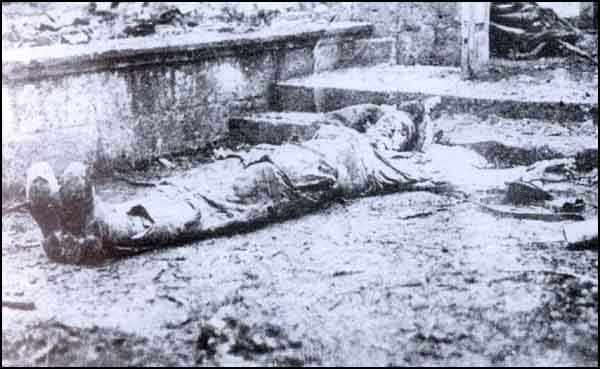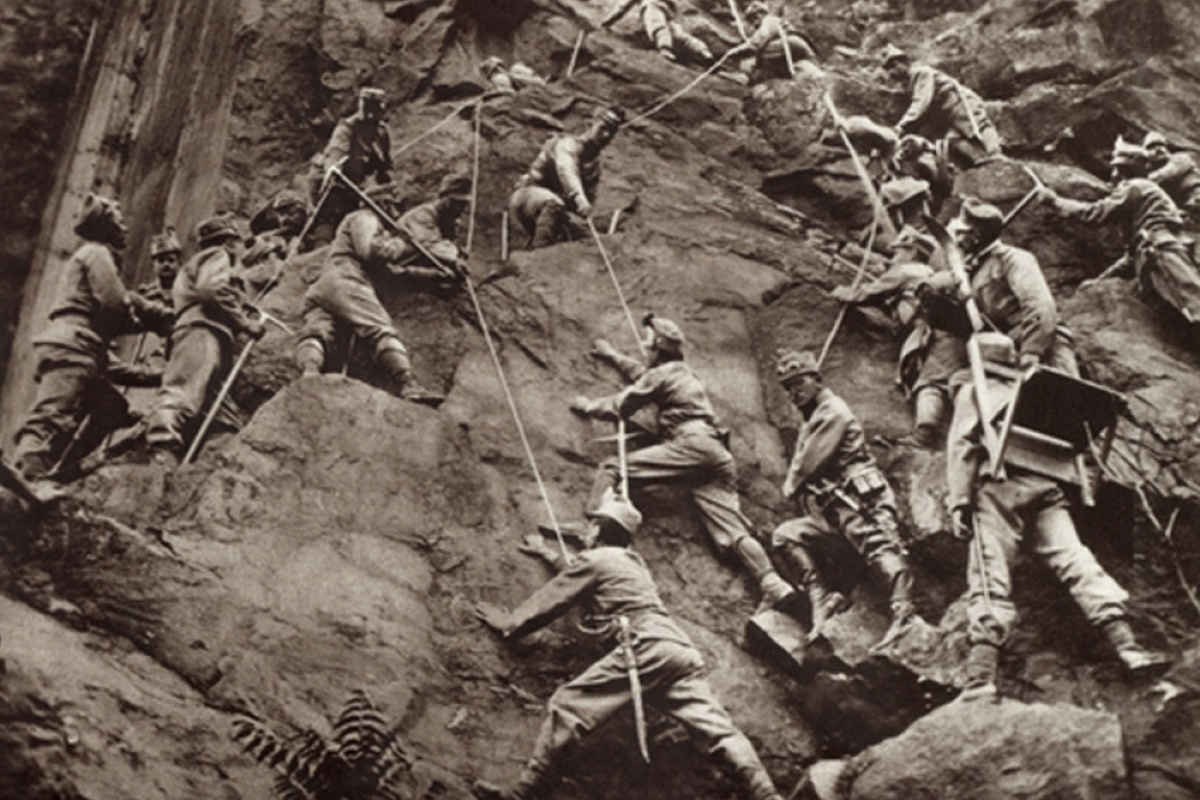Italy Now in War: Repeated Attacks in the Alps Fail;
Ceaseless Slaughter of Armenians
Special to The Great War Project
(4-13 July) The slaughter of Armenians living in Turkey continues without a break.
The attacks on Turkey’s Armenian population begin several months earlier. It has not stopped. Hundreds-of-thousands of Armenians are slaughtered.
In early to mid-July a century ago in the town of Trebizond on the Black Sea, some 15,000 Turkish troops, according to historian Martin Gilbert, “rampaging through the predominantly Armenian town, massacred its 17,000 Armenian inhabitants.”
Gilbert reports, only one hundred Armenians survive.
Further south “thousands of Armenians were massacred in the villages around Mus.” Mus is a predominantly Armenian and Kurdish town in eastern Turkey.
The extermination of the Armenian population there comes after….
the Ottoman government issues written orders that all Armenians everywhere are to be exterminated.
It is believed some 140,000 Armenians were killed in these attacks in early July.
Elsewhere, fighting is spreading for the first time to Italy. Italy had been an ally of Germany and Austria-Hungary. But it joined the allied nations – Britain, France, and Russia — in May. By July Italy is in trouble.
“The Austrians reacted with fury,” writes historian Michael Neiberg, “at what they saw as Italian perfidy in the empire’s moment of great need.” But Italy pursues a policy of pure self-interest, writes Neiberg.
The clash comes in the Austrian Dolomite Mountains in the Alps and in the Isonzo River valley. “Seeing that the Austro-Hungarians were setting up defenses in the mountains,” writes Neiberg, “the Italians put their hopes on a quick offensive. If successful, they could push through the Alps and the Isonzo valley before the Austro-Hungarians could organize their defenses.”
“If they failed, they faced a long, difficult battle against solid defenses.”
The Italian plans fail. “In the Dolomites,” writes historian Gilbert, “the Austrians repulsed fifteen separate Italian attacks.”
Failure comes to the Italians in the Isonzo River valley as well. Despite a six to one numerical superiority in troops, after five days of fighting on a front that stretches for 21 miles, the Italians suffer heavy losses.
“In some places,” reports historian Neiberg, “the fighting on the Isonzo became savage.”
Bitter hand-to-hand fighting is the norm.
The Italians gain less than a mile.
It seems that on all fronts, the allied powers of Britain, France, Russia and now Italy, are faring badly.
The Central Powers of Germany and Austria-Hungary and their Ottoman allies, despite their weaker positions on many fronts, are as historian Martin Gilbert writes, “in the ascendant.”


